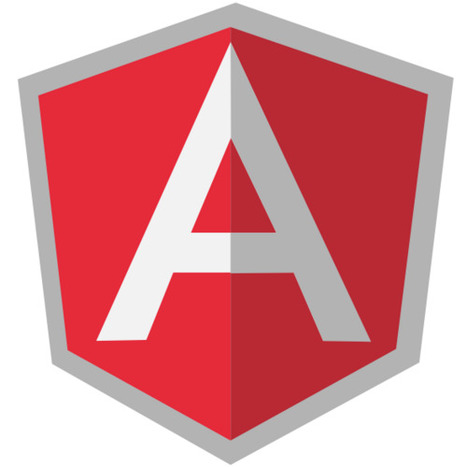Have you been frustrated at all with Ember because of a lack of common functionality? Well, if you are you are probably like how I was and forgot to read the manual. There are a lot of really excellent functions baked right into the Ember. Here are some really useful ones that may come in handy and save you a few keystrokes. Many of the examples below are taken from the Ember API docs and a few are taken from the Discourse source code.
Get Started for FREE
Sign up with Facebook Sign up with X
I don't have a Facebook or a X account



 Your new post is loading... Your new post is loading...
 Your new post is loading... Your new post is loading...
Current selected tag: 'EmberJS'. Clear
No comment yet.
Sign up to comment
One of the issues that has popped up while working with ember.js is how to go about doing radio buttons. By default ember.js offers many input views, but radio buttons are not one of them. Fortunately with a little tinkering I was able to figure out how to utilize radio buttons! The way I have it set up allows us to bind to the input value and then automatically check a radio button if their values match.
From
blackbe
The Problem Ember.js has a limited set of user definable attributes that can be passed in to their form controls by default. Below you will find a list of supported attributes for each form element control: ... Some of the things missing include file upload attributes and the newer HTML5 form attributes which are becoming a necessity for mobile compatible websites: accept autocomplete autofocus name required Ember-testing is a recent addition to the Ember.js framework that allows you to create integration tests for your app using a custom DSL for interacting with your async Ember.js app. We’re going to walk through how to write integration tests with ember-testing using the qunit-rails gem. I’ve been finding issues in an Ember application I’m working on where the author (me) didn’t fully grasp Ember controllers. Here are a few controller concepts I’ve learned. First we’ll setup a route with some dummy data and render a list of names.
From
rosskaff
The ember-rails gem is a great way to get started with Ember.js in a Rails project. Another approach is to create and serve an Ember app on a static webpage, totally decoupled from the backend environment. It would be great to have some of the modern front-end development tools we get with something like Rails in a static web environment. A great project to consider for this is Middleman. The Ember Hot Seat will be a web series dedicated in bringing you the latest and greatest news from the Ember.js community. Each week we'll feature a new person bringing their unique perspective in the Hot Seat.
Jan Hesse's insight:
podcasts for the Ember.js community Tips to learn emberjs and advice on getting started with Tom Dale's Tutorial
Jan Hesse's insight:
recently a screencast was added Ember.js brings some new and interesting conventions to the table for designing single page applications. In this talk, I'll be covering the key pieces of Ember When considering whether or not to use Ember.js, some stumble because Ember Data isn’t considered production ready. This is a little unfortunate given that you can use Ember without Ember Data by communicating directly with the server via AJAX. However, for those who want want more than jQuery’s$.ajax(), here are five alternatives worth checking out as a stop gap or replacement. So the problem becomes, without Ember-Data, how to put the M in MVC? You could use plain-old Javascript objects. But Ember provides such a rich object model, coupled with live-updating templates, you'd be stupid not to take advantage of it. Fortunately, writing a very simple custom base model that plays nicely with its observer-based templates is not very difficult. In order to write your own base model, you need to understand that Ember's live-updating is not magic. It's based on always working with the same object references at all times. Therefore we make heavy use of caching via Ember.Map. This codelab covers the techniques and design fundamentals required to create modern, 'lick-able' web applications. The exercises look at the fundamentals of building web applications: * Using an MVC framework I've been teeth-deep in Client-side Javascript frameworks over the last 4 months for Tekpub. This month is Angular, last month was Ember's turn and I gave up. It's the first time I've given up - here's why.
Jan Hesse's insight:
EmberJS compared to AngularJS and BackboneJS |
Working on any interface, it is important to let the user know that their actions are doing something. Nothing would is worse than clicking a save button and wondering to yourself, “did it save?”. Ember.js is an excellent platform for creating web applications but unless you go out of your way to display that a record is updating, the user will never know. This is where a loading button view comes into play. I’ve went ahead and created a button that will bind to a true/false value and listen for any changes. In addition, we are able to bind actions to the button by implementing “ViewTargetActionSupport” in our Ember.View; this means that it can retain its default HTML functionality of binding actions. By default, this button uses font-awesome to render a loading spinner, but you can change the template to display whatever you need. The initial “Save” text is editable as a passed parameter to the Handlebar’s view.
From
dybskiy
As of late March 2013, after spending a month with each project, digging into documentation and examples available, I can say with confidence: it’s not fair to compare them. But if you really don’t have time to learn both – use AngularJS. Ember is not ready for prime time, yet. This time we "tried" adding a comment to a recipe. We mean "tried" because sadly we didn't succeed, but we'll get there! This was the first time we pair programmed on Ember.js. We started building a list of recipes, a single recipe page and started showing comments for each recipe. ShareJS is a nice looking chunk of code. The library uses a pattern called Operational Transforms to share changes to a document (or data structure) over a web connection. Combined with Ember’s data bindings, it isn’t difficult to brainstorm up some fun app ideas. For a first experiment, all I want to achieve is creating a text field that has persists it’s changes to a server and updates when another user is editing. A basic, classic use of ShareJS.
Well, after getting the basics to work I decided to clean up the mess that was quickly becoming of the HTML and found the wonderful HandlebarsAssets gem that promises to compile Handlebars down to JavaScript and serve it through the Rails 3.1+ asset pipeline. After doing so I can say with confidence I managed to hit every single stumbling block along the way so I decided to write down where I went wrong. Hopefully this helps some other poor soul before he has to dive deep into the bowels of Ember like I had to :). A tree consists of nodes and branches. Each branch can contain more nodes and/or branches. The branches can be represented by nested ul tags and the nodes by li tags within them. We will create 2 Ember views, one for the nodes and the other for the branches. An Ember view has a tagName property which will be assigned to the html tag it creates. We will use an Ember CollectionView to represent the branches. A collection view renders its content within the itemViewClass you specify. I chose AngularJS because it seemed closer to what I know. More like Backbone. Data-binding is touted as Angular’s killer feature over Backbone, but there’s a lot more to Angular. I also chose Angular because everybody else here in the shop was learning Ember. What is wrong with me? Requiring users to click a submit or save button in a web application is great for developers but can be a burden on users in some situations. Sometimes it is nice to automatically save the user’s data as they fill out forms. Automatically saving models in Ember can be a little tricky. A first pass might look like this: When working with Ember Data version 0.13, you might want to inspect the records that are stored locally in the browser for debugging purposes or just for peeking at the internals of the persistence layer. First of all, Ember Data is accessible via the DS namespace in the browser. Ember Data has a default store along with a default transaction that every record belongs to (unless you manually create a transaction). This is my #MagmaConf presentation, I talk about API's, Ruby on Rails and EmberJS
Jan Hesse's insight:
REST, CRUD, Versioning, Solr, Serializers Yehuda Katz recently gave a talk entitled "The Future of the Client-Side Web" in which he detailed the current challenges that web standards bodies face when trying to design APIs for web developers to use. In this talk, Yehuda also highlighted Google's recently announced Polymer Project as a good example of the right way to push the web platform forward. Polymer provides a "low enough" level API that gives web developers the power to redefine the way they write markup using the power of newer features coming to JavaScript in ES6. The specifics of the implementation aren't relevant to what I want to say here, but Yehuda does a great job covering the details at a high level in the video; I suggest you watch it if they interest you. |
















